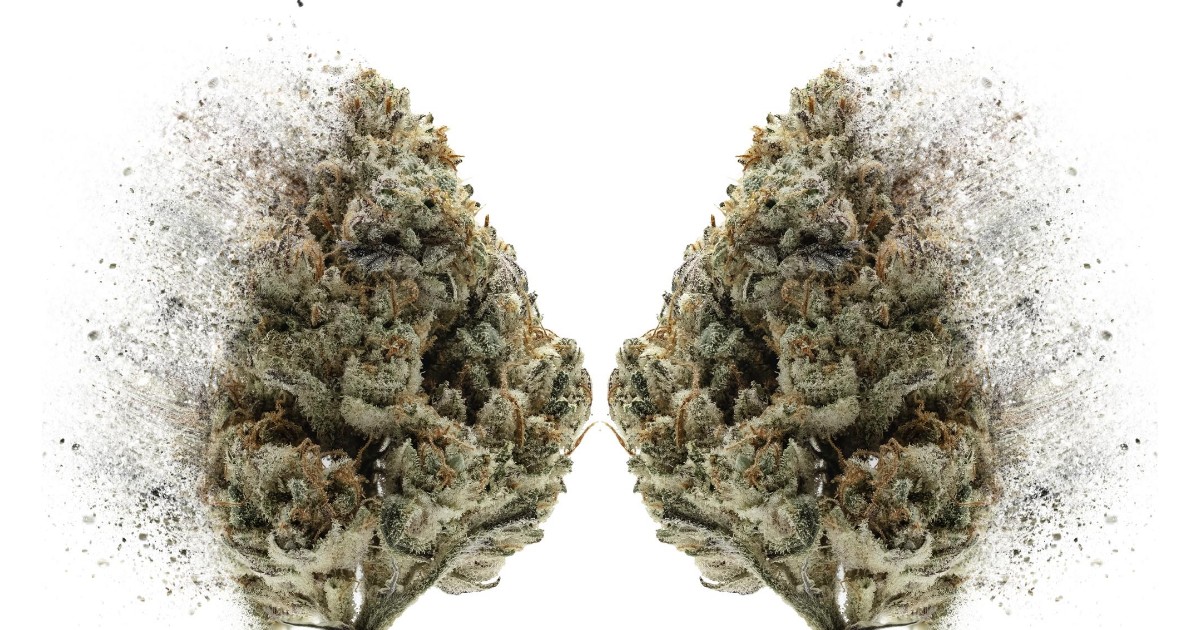A Guide to Higher Education
On February 10th, 2021 March and Ash presented a live webinar called the Guide to Higher Education, an educational program about cannabis. One very important part of our mission at March and Ash is education. Even though cannabis is becoming legalized across many parts of the world, we find there are still certain stigmas and mindsets that people have about cannabis. We hope that by providing educational resources, such as this webinar, we will not only help our customers, but those who may not be familiar with cannabis at all. Our aim is to help de-stigmatize the plant with education and welcome a new wellness tool into people’s lives.
The video will introduce you to some of the basics of cannabis including the endocannabinoid system, different types of cannabinoids, terpenes, the entourage effect and the differences between sativa vs. indica.
We hope you enjoy the educational content in the video as much as we enjoyed putting it together. At the end of the video presentation, we opened up a question and answer session between viewers and March and Ash’s lead educator, Anna. Check out the great questions the audience asked below.
Question: How soon before we start seeing THC levels at 40% or higher for flower?
Anna: That is a very high percentage to have in a flower. You know, the plant itself has changed so much from what it used to be 10 years ago, 20 years ago, even 30 years ago, because of human manipulation and what has been done with the breeding and how it’s grown. Back in the 1960’s, the THC percentages were likely very low, anywhere from 6% to 12%, if even that. And that was good for some people, but not great for others and that’s one of the things about cannabis. Some people need a very small amount, some people need a large amount. But as far as 40%, I’m not a grower so I can’t specifically say as far as a timeframe, but I can definitely tell you that I have seen some flowers out there that test at 35-36%. I imagine with the technology that exists now and our depth of understanding about the actual plant itself, that THC percentages can be manipulated to be higher. Now, with that being said, there are still products out there that are going to have a higher percentage of THC, just not in a flower form. So say you have a pre-roll that has cannabis oil on it... the percentage might’ve been 20-25% with just the flower, but with the oil, suddenly it’s at 47%.
Question: Are CBN cannabis products considered the most effective for sleep?
Anna: Because everybody’s endocannabinoid system is so unique to them, it can be difficult to say point blank that CBN would be the most effective for sleep. When someone is specifically targeting sleep, we first ask them ‘have you used cannabis before? If you have, has anything worked for you for sleep?’ There are some people that might not want to feel a strong intoxicating effect from THC in order to fall asleep, but then there are some people that do want that. Due to the different cannabinoids in products that are available, you could potentially take CBN and THC together. Now, because CBN is less psychoactive for most people than THC, it is going to give you a less intoxicating effect. But then say we take CBD and CBN, because CBD for most people has no intoxicating effect and CBN has very little, that could be zero to no intoxicating effect for most people. So, it’s an open-ended question, which I always tell people that you are your own personal scientific experiment. You might need to try a couple of different things while you’re targeting a personal wellness goal to find the best product for you at the best dose and what time to take it, especially for going to sleep.
Read: Cannabis for Sleep, Here's What You Need to Know
Say somebody smokes before they go to bed and they fall asleep, but they wake up in a few hours. Perhaps for that person, taking edibles or a tincture might be a better way to go, because that delivery system allows the cannabinoids to stay in your body for a longer period of time. When you eat an edible, it might take 45 minutes to kick in, but then you’re most likely going to feel the effects for six to eight hours, maybe even more. So, thinking about how, what you are targeting and how you sleep, that’s ultimately going to give you the best idea of how you might go about it. And just like I said before, you might need to try a couple of different things to find what works best for you, but I always tell people not to get frustrated by it. We just have variables to play with.
Question: Could you remind us again what THCv is and are THCv products becoming easier or harder to come by?
Anna: THCv is Tetrahydrocannabivarin. It is not typically found in large quantities in flower. There are growers that are manipulating the genetics of cannabis in order to increase the amount of THCv that the plant will produce. So, you are generally finding more THCv-based products out there. Now whether that might be solely THCv, I don’t really see anything that is just THCv because, in general, it only gives you about 25% of the intoxicating effects, and most people are still looking for some of those effects. So, you generally see it paired with CBD, THC, or both of those things, but we’re definitely seeing more THCv products on the market. March and Ash carries LEVEL protabs. They have a wonderful THCv product called Stimulate and I highly recommend it. That is one of these products that is a 1-1-1 ratio. It has THCv, THC, and CBD. I’ve also seen a couple of vapes out there that are THCv-based as well, so it’s definitely an upcoming thing as we understand more about how we can manipulate the plant itself.
Q: If strains are somewhat unreliable in determining effects, what is a better attribute to look out for when choosing a product?
Anna: That would definitely be the smell. Terpenes are what gives marijuana its smell and flavor, but they ultimately are what determines how we react to cannabis. There’s a lot about strains that scientists still don’t necessarily understand when it comes to determining its effects. But the smells - terpenes - can be a lot more helpful in trying to discern effect. Moreover, trying different strains and understanding what your body responds best to, that’s ultimately going to be the best determining factor in choosing a product.

Question: Could you tell us a little bit more about a few of the different types of terpenes?
Anna: There are about 30,000 terpenes out there in the plant world. Terpenes are also found in bacteria, which is very interesting! Twenty thousand exist in the plant kingdom just by itself, and then we know of 120 different types of terpenes in cannabis. Pinene is the most abundant terpene found in nature and exists in plants such as pine needles and rosemary. Pinene actually is one of these terpenes that crosses the blood brain barrier very easily so our body absorbs it very, very easily. Another one is myrcene, the second most abundant in cannabis and that is also found in mangoes, hops, and lemongrass. It has antibiotic and pain relieving properties, as well as a sedating and couch locking type of effects. This is also another terpene that can cross the blood barrier very, very easily. So, we can feel its effects quickly. There’s also limonene, which is found in almost all citrus plants. Linalool is another terpene in cannabis that is also very prominent in lavender. Linalool can be helpful with anxiety. Terpenes are certainly something worth researching personally, because they play a huge part in the feeling, taste, and smell that you experience with cannabis.
Read: What are Terpenes and Why Are They Important?
Question: For someone who is primarily a flower smoker, what is the best way to select a vape product?
Anna: There are many different types of cannabis oil extractions for vapes. I would suggest trying a couple of different kinds to see what works best for you and if you don't know about those extraction types yet, that's what March and Ash concierges are there for. They are there to guide you and have a better understanding of the product types such as distillate, live resin and more.
Question: Touching upon the world of concentrates, our next question is what is kief?
Anna: Kief are the trichomes found on the outside of the cannabis plant. Trichomes are resin glands that hold all of cannabis’ active ingredients in it. Say you are breaking up cannabis with your hands, then you have that sticky stuff on your fingers, that's what kief is. There's joints that have kief inside of them and joints that are rolled in oil and then rolled in kief, so there are many kief product options if you're looking for it.
Is it safe to give your dog CBD products?
You know I actually do [Anna shows her dog on screen]. This is Lola, she actually has a luxating patella, which means that her kneecap can move out of place and it causes her some discomfort. I give her a 20 to 1 [CBD to THC], tincture every day. She's a little picky and she really doesn't like me to put it directly in her mouth so at night she gets a special wet food dinner where I mix the CBD tincture inside of the wet food. The product has not completely fixed her issue, as I think it's always going to be a problem for her, but she can walk a lot easier now.
Dogs have an endocannabinoid system just like humans do. That's why cannabis works for them. Most vets are going to tell you not to give your dogs high amounts of THC because they are very sensitive to it. You should always speak with your vet before administering any type of cannabis product for your dog. March and Ash carries a brand called Vet CBD and they have an amazing customer support service. You can email the company with any of your questions. They even have an emergency support line if anything goes wrong. For animals, the point isn’t for them to feel any sort of intoxication. CBD for animals may be used to help relieve pain or anxiety.

DISCLAIMER: THIS SITE DOES NOT PROVIDE MEDICAL ADVICE.
All information, including but not limited to, text, graphics, images and other materials contained on this site are for informational purposes only. No text, graphics, images or other materials on this site are intended to be professional medical advice or a substitute for professional medical advice, diagnosis or treatment. Always seek the advice of your physician or other qualified health care provider with any questions you may have regarding a medical condition or treatment and before undertaking a new health care regimen, and never disregard professional medical advice or delay in seeking professional medical advice because of something you have viewed on this site.